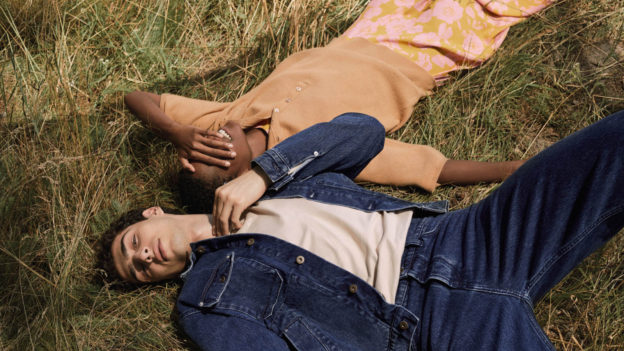| In partnership with |  |
After the successful launch of Zalando’s “Small steps. Big impact” brand collaboration in January 2020, which saw the Berlin retailer generate a more sustainable capsule collection, Zalando has extended the concept to include both mens and womenswear.
This time, the collection has been brought to life by eight brands, including Scandinavian-based Designers Remix, Henrik Vibskov, Holzweiler, and House of Dagmar.
The brands were selected based on their values surrounding sustainability and were tasked with a brief challenging them to develop a sustainably-minded collection that fits with a common aesthetic. Alongside championing sustainable practices and smaller brands, this capsule collection encouraged collaboration between those selected and sparked a wider conversation around the necessity of this to effectively tackle the industry’s problem with unsustainable practices.
“Our aim is to inspire customers to shop more sustainably and we are glad to do this together with our brands, proving that collaboration is the way to go,” said Lena-Sophie Roeper, Director of Buying Premium at Zalando, of this decision.

Above: Sweater by Henrik Vibskov, Turtleneck by Closed; Sweater by Closed
The collection itself is designed to be the base for building a lasting wardrobe around. Timeless silhouettes and wardrobe heroes feature heavily, from tailored jackets to easily layered knitwear. The palette is muted, ideal for the transeasonal nature of a fall wardrobe, but far from out of place in midsummer or the dead of winter too: shirting and fine knits in cream, peach, and pale pink are met with rich chestnut leather and indigo denim, while hardwearing textiles like corduroy and wool sit close to lightweight ecovero viscose and cotton.
The longevity of an item plays a huge role in sustainability. The adage goes that the most sustainable clothes are the ones already in your wardrobe, so when it comes to buying new, it’s vital that it’s a piece that can last. The timeless quality of clothing is therefore relevant, but so is the fabrication: style can’t last without quality
Here, we take a closer look at the Zalando Small steps. Big impact collection and five Scandinavian fashion designers’ approach to material sustainability:
Designers Remix has gained a cult following for their reworked collections that focus heavily on sustainability, so it only makes sense that they would use recycled and sustainable material for this capsule collection:
“The vast environmental impact from the production of clothing comes from the fabric. We always strive towards using the most sustainably preferred fabrics available.”
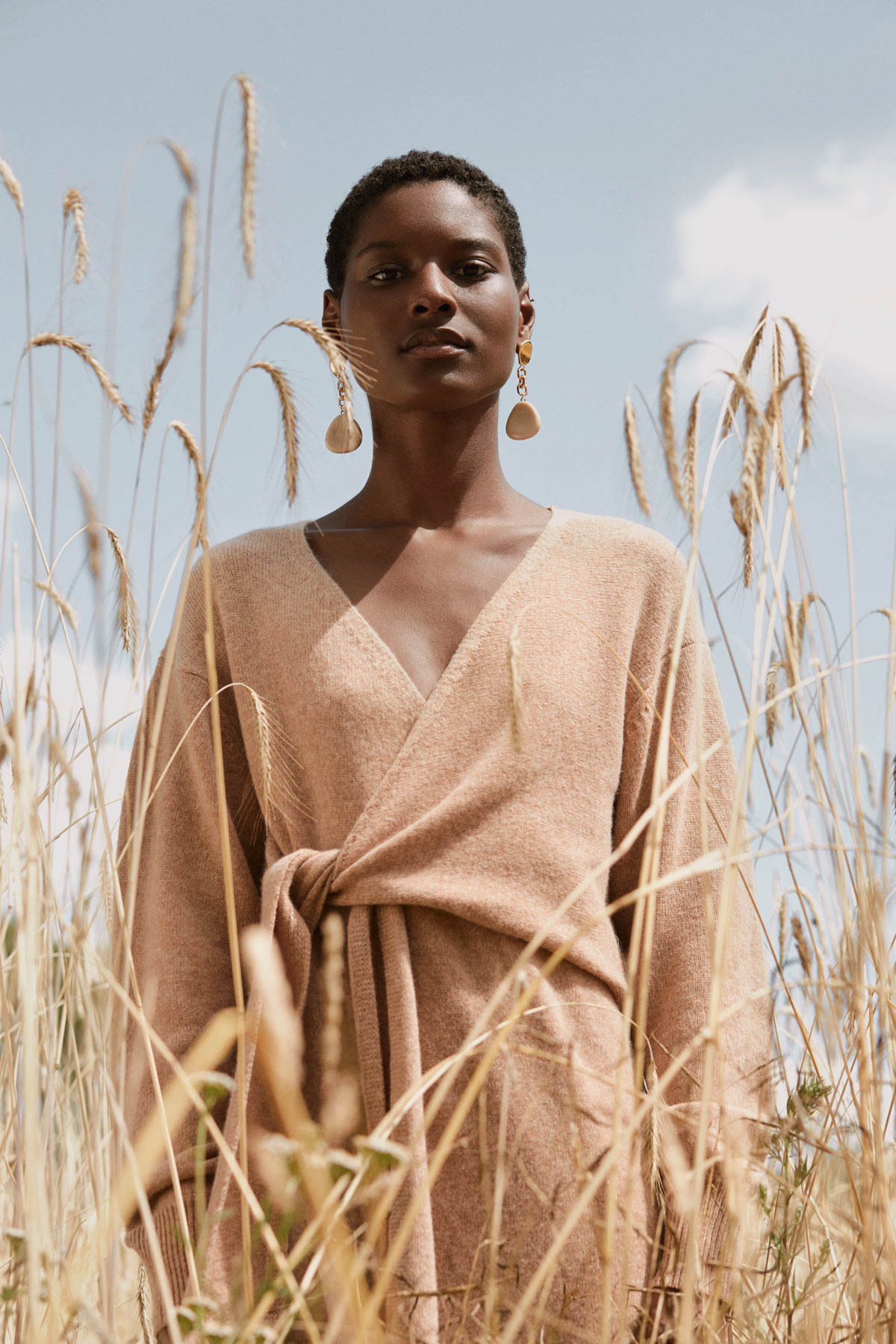 | 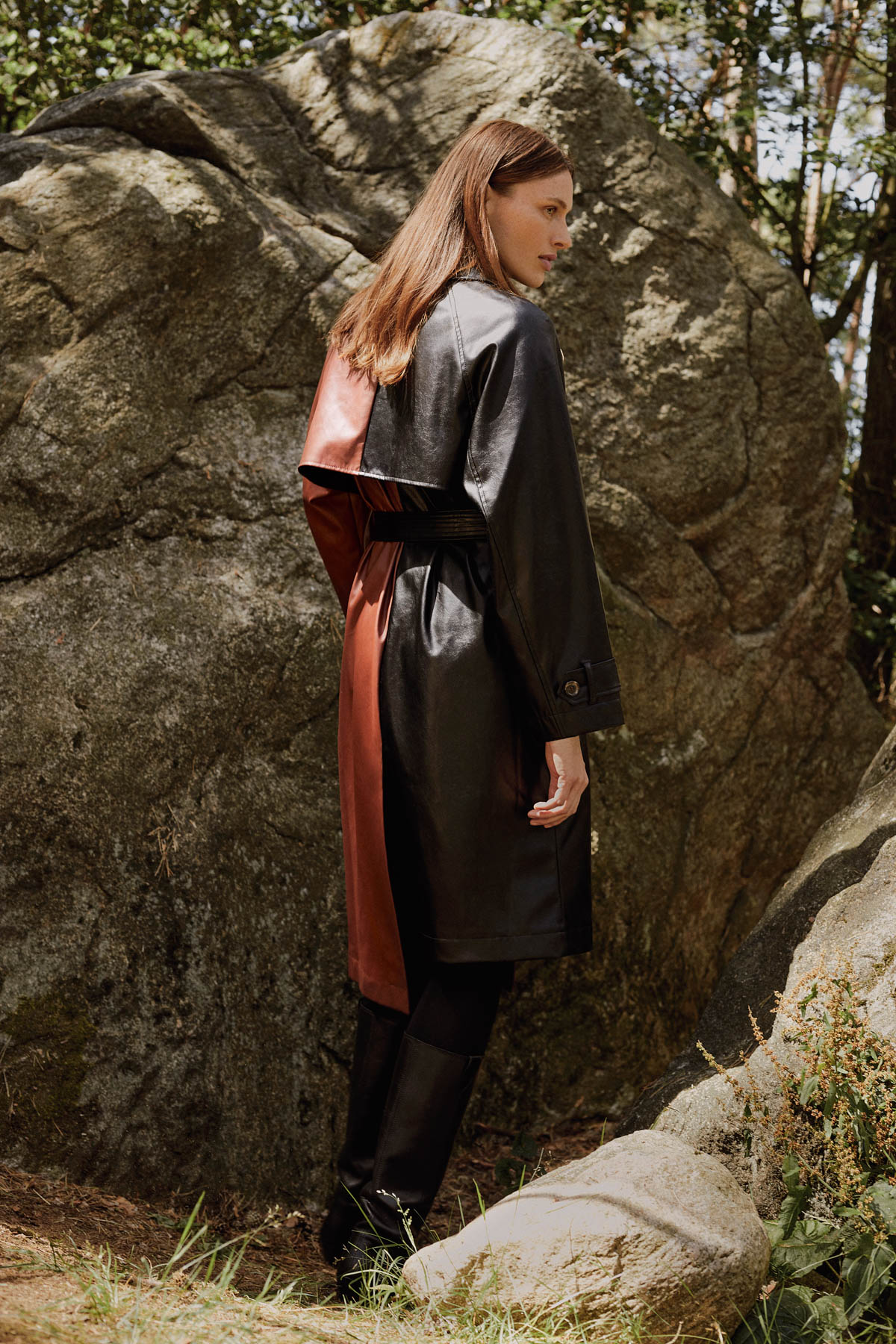 |
Left: Knitted dress by Designers Remix; Right: Coat by Designers Remix
This has meant using recycled wool and polyester, ecovero viscose, wool from non-mulesed sheep, and vegan leather for this collection, but also investing in carbon offsetting schemes.
“We’ve invested in a United Nations and Gold Standard certified windfarm project in Bac Lieu, Vietnam, in order to make our collections climate positive. For each Designers Remix piece sold, we will balance out 50kg of CO2.”
The collection is a pared-back take on Designers Remix’s usual aesthetic, with easy suits, staple knits, and even a simple grey hoodie. The standout piece is a two-tone asymmetric jacket, crafted from vegan leather, because “leather is a beautiful product but honestly we think it looks better on the animal than on you.”
Designers Remix enjoy the challenge of working with sustainable fabrics. “When choosing to work with sustainably preferred fabrics only, we are limiting our options, but we are also opening doors to a whole new way of working with design and fabrics. It forces us to challenge ourselves and to look for creative alternatives and new exciting fabrics. We recently discovered fabrics such as biodegradable corn starch which we used in our FW20 collection. It will be exciting to see what other fabrics, and ways of working, are just waiting to be discovered.”
Henrik Vibskov focused on reused and organic certified materials, taking recycling a step further with his polyester down jackets crafted from old plastic bottles.
“We use recycled polyester eco down in some of the down jackets, which actually comes from plastic bottles. When treated they become like a down material – it’s actually warmer than normal goose down.” On top of being warmer, the PET recycled material is easier to care for and actively helps reduce ocean plastic.
Their whole production, which includes upcycled cotton used for their twill and denim trousers, is OEKO-TEX certified.
 |  |
Left: Denim jacket by Henrik Vibskov; Right: Sweater by Mykke Hofmann, Dress by Henrik Vibskov
“This natural approach to life should infiltrate to all our work and all our products, without a big fuss actually being made. It should just be how it is, it’s how the world should be and that’s how we should change, that’s the vision.”
Holzweiler have continued to focus on high quality material that supports long-lasting wear in this collection, as well as introducing some new sustainable and recycled materials.
“For this collection our main focus has been, as it always is, on making items that can be worn and washed over and over again, keeping the same good quality. For fabrics, we have focused on organic cotton, recycled polyester and viscose.
“We have also added RWS certified wool to this collection. Wool is an amazing product when it comes to sustainability; it is self-cleaning, long-lasting, and can be recycled.”
Holzweiler also has an additional focus on fair treatment of all in the supply chain, taking sustainability beyond the remit of treatment of the planet.
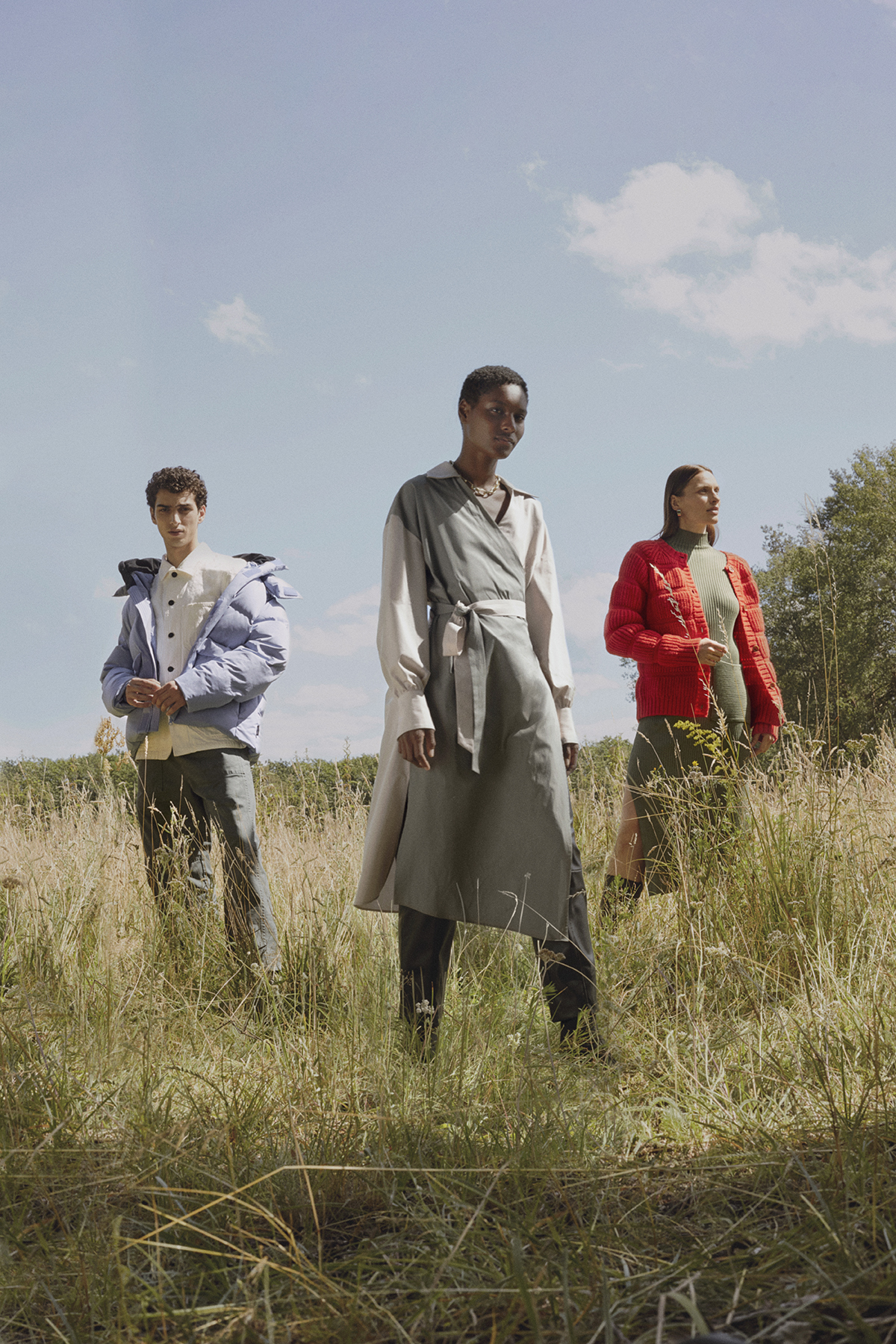 |  |
Left: Blue jacket by Holzweiler, Denim jacket by Closed, Jeans by Henrik Vibskov; Coat by Mykke Hofmann, Trousers by Designers Remix, Red cardigan by Henrik Vibskov, Knitted dress by Holzweiler; Right: Turtleneck by Holzweiler, Sweater by Mother of Pearl
“A more sustainable production (as no production can be 100% sustainable) makes sure that all people in the supply chain are treated fairly, in terms of fair wages, workers’ rights, safety etc.”
This coupled with clothes that last for generations, “that is sustainable fashion for us.”
House of Dagmar cite their three core pillars – design, ethics, longevity – as the basis of their Zalando capsule collection. In this collection, and all the work they do, they’re working to reach the UN defined sustainability goals and the Paris agreement.
“We are fighting to improve production methods and to emit less carbon dioxide from the fiber production, while also focusing on minimising water consumption and preventing wastage.” This has manifested in the use of recycled fabrics, seen throughout the collection. Like their classic tailored pieces in camel and caramel, made using a blend of recycled wools and polyester.
“For us this is not a trend, this is a journey that we started in 2005. In everything we do, we have an environmental perspective. By choosing the right fibers and materials from the beginning, we make sure the impact on the environment from the production of a product is better than average.”
The collaborative aspect of this project has been key, but the mindful use of textiles – and the labor associated with it – is a red thread that runs through the collection, tying small and big brands together with a common goal.
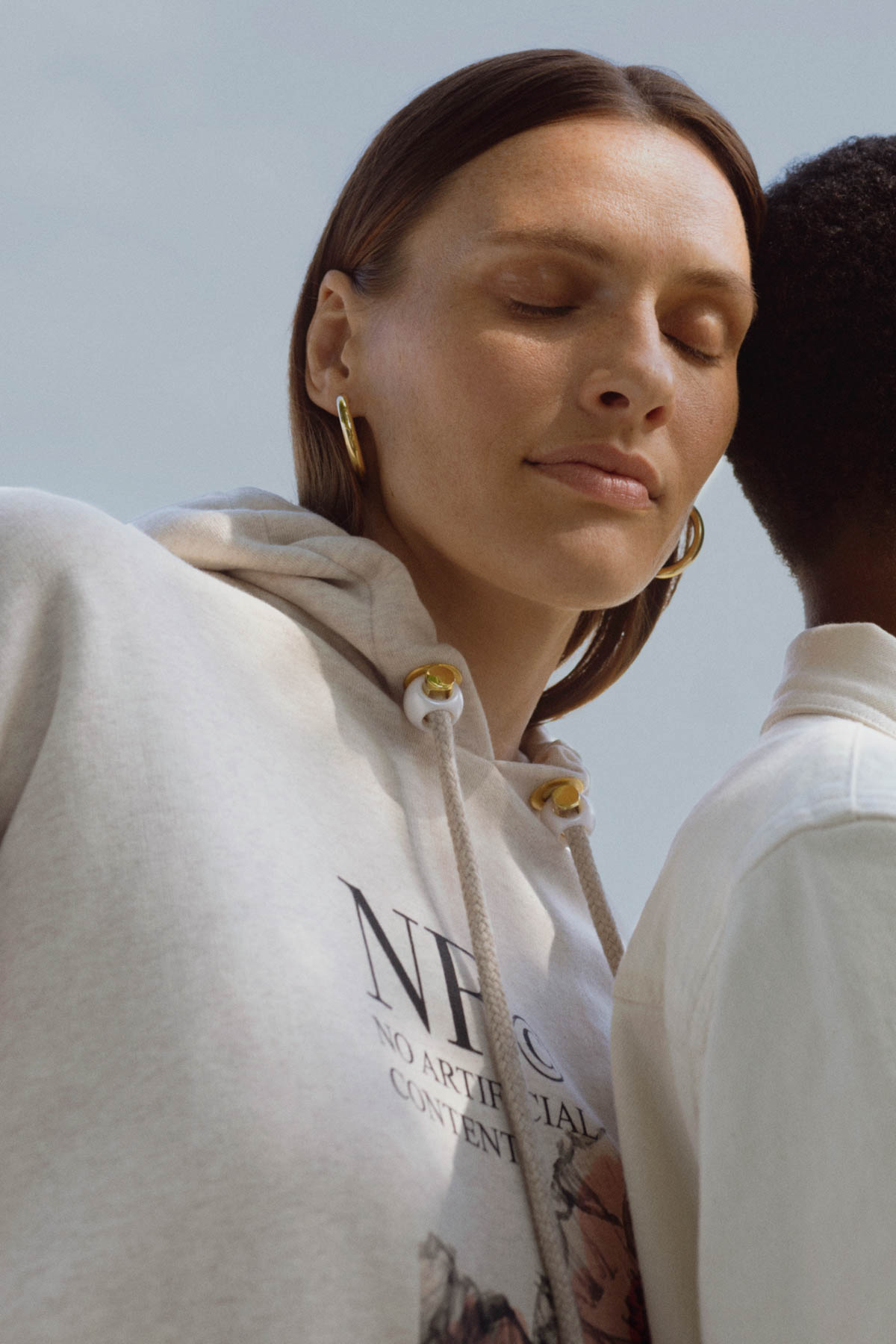 | 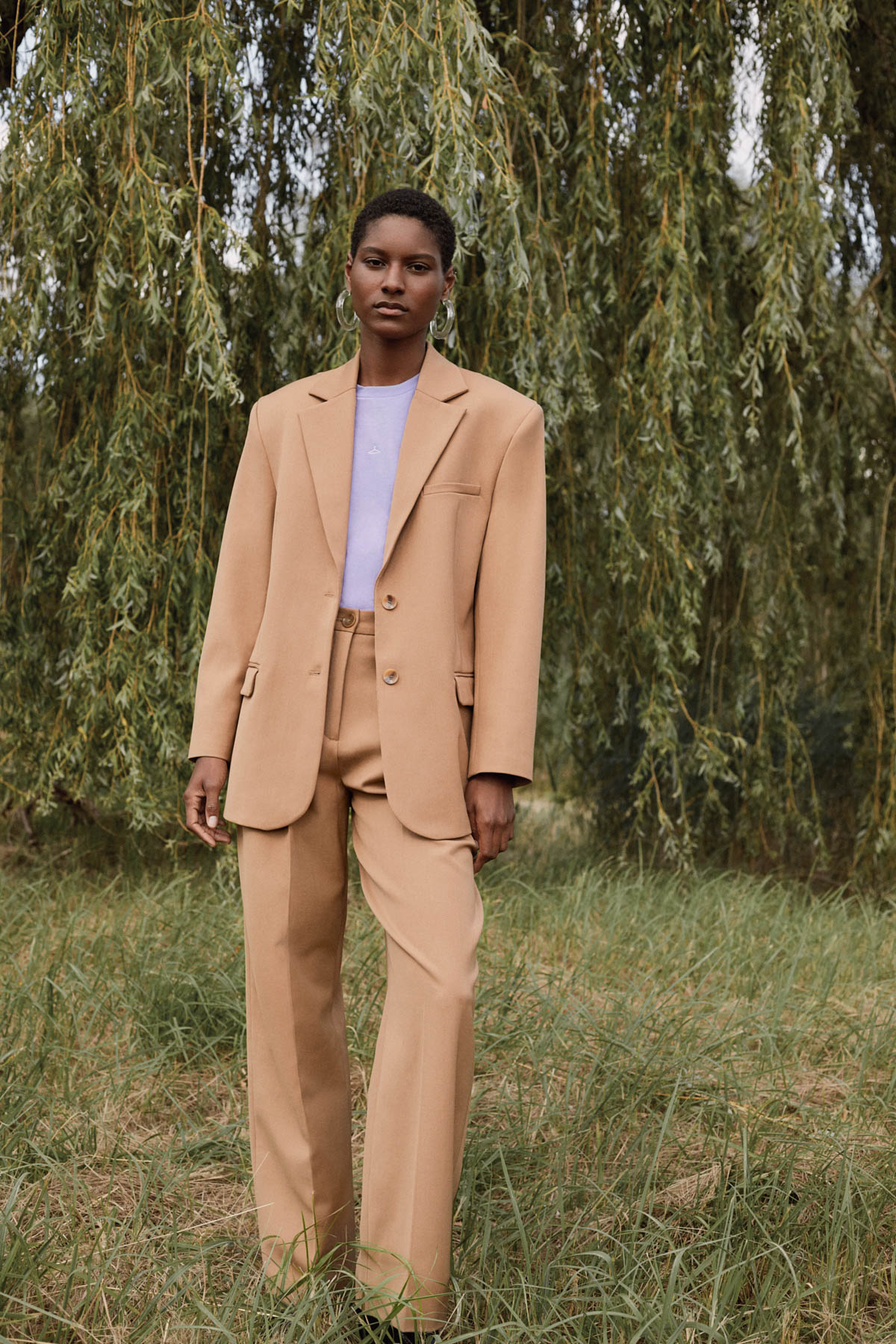 |
Left: Sweater by Mother of Pearl, Turtleneck by Holzweiler; Right: Blazer by House of Dagmar, Trousers by House of Dagmar, T-shirt by Holzweiler
Discover the Small steps. Big impact collection.

